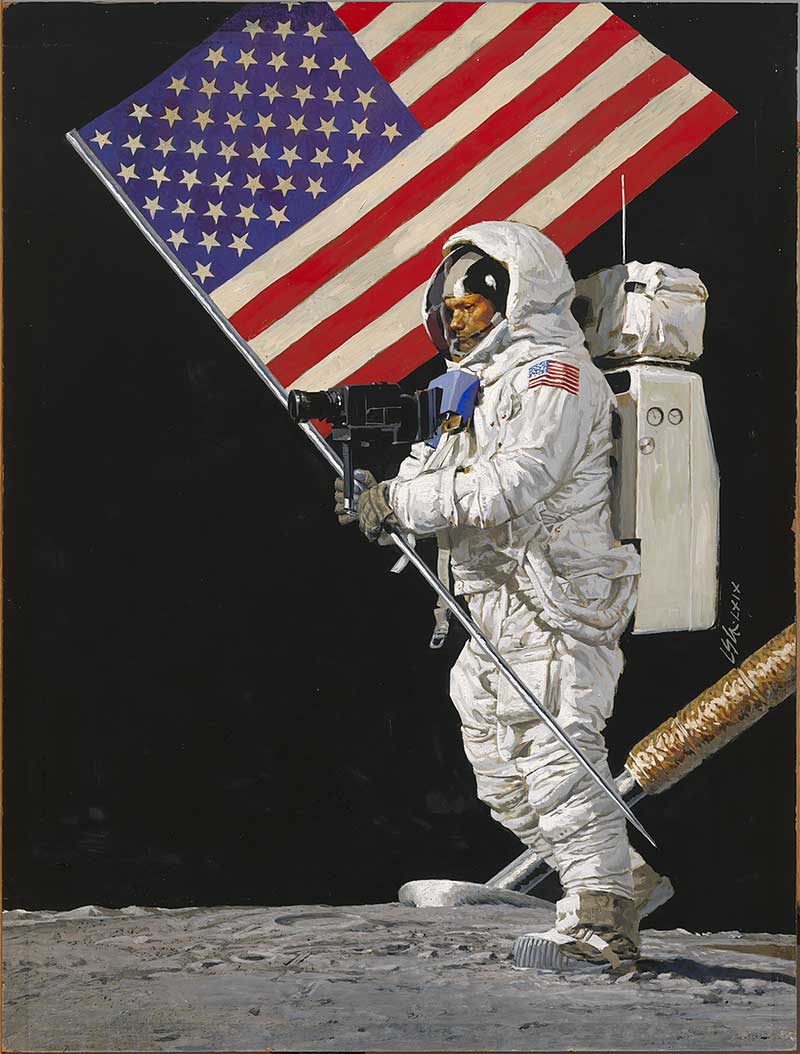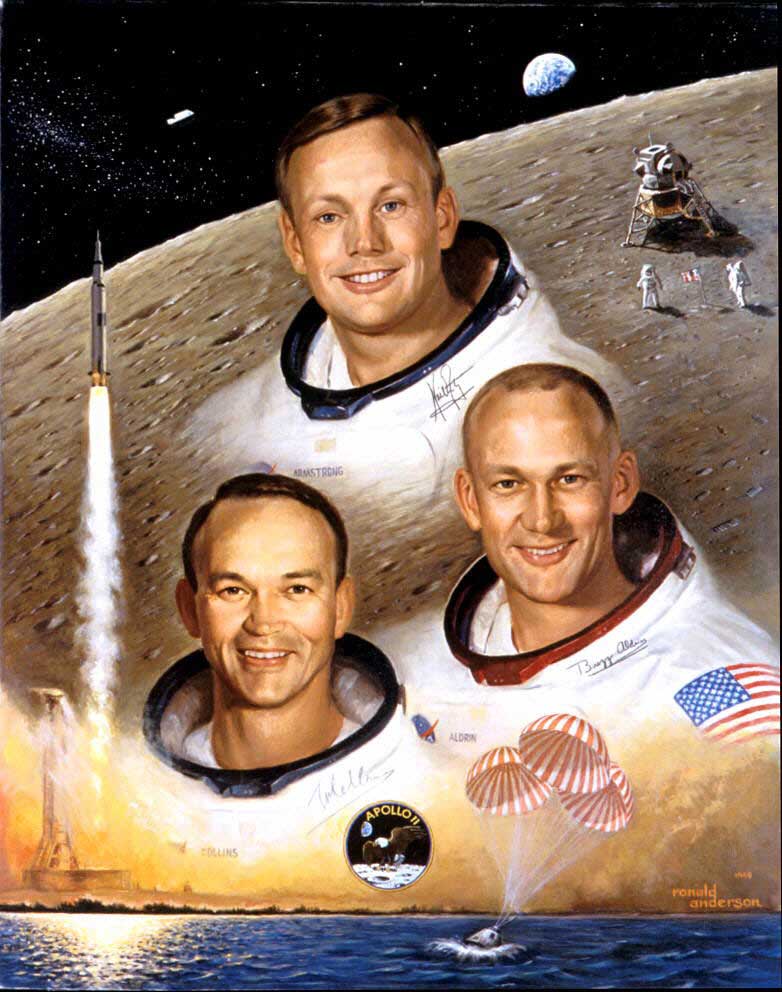Neil Armstrong Lands on the Moon, July 20, 1969

This blog post originally appeared July 20, 2016
Neil Armstrong’s words from July 20, 1969, are among the most iconic in a century full of memorable quotations: “One small step for man, one giant leap for mankind.” Most people are familiar with the incredible circumstances surrounding this quotation; indeed, it has almost become the stuff of modern legend. The video footage shows the intrepid astronaut stepping out of his landing craft onto the lunar frontier. His radio transmitter crackles, and he speaks the famous words that are broadcast across the Earth and later repeated until they are ingrained in the popular imagination. As Armstrong bounces around in this strange new environment, it looks as if he is leaping for joy.
The moon landing was more than just an American political victory in the Cold War or the next step in mankind’s progress towards the future. It was both of these things, but its significance as a triumph for the entire human race should never be understated. Today’s date commemorates a remarkable accomplishment of human creativity, courage, and ambition. Neil Armstrong himself later described the adventure as the answer to a calling within human nature: the natural compulsion to discover, explore, and experience new phenomena. Through the medium of television, millions across the planet were also able to take part in the occasion.
People today can still recall the special report and how it was charged with a kind of rare excitement; how the usually solemn Walter Cronkite was beside himself with enthusiastic glee. Countless others surely must have felt the same way as they gathered in front of their TV sets to watch the fulfillment of long-held human desire.
For the first time in history, the moon was no longer a glowing orb up in the night sky, far beyond reach or relevance: for twenty-one hours, it was as tangible as one of the beaches near the launch site. The astronauts planted the flag and the plaque that commemorated their visit, and explored the bleak and beautiful expanse. New technology enabled them to speak with President Nixon and let him know that everything was just fine 240,000 miles above the Earth. When the astronauts finally returned home, they were given a hero’s welcome.
These paintings in the National Portrait Gallery commemorate the great accomplishment of these explorers, and rightfully so. Their legacy, which we celebrate today on the forty-seventh anniversary of the moon landing, has inspired many aspiring astronauts to look up at the night sky and realize all the marvelous possibilities that may one day await them. Regrettably, it has been more than over forty years since anyone else has been to the Moon.
